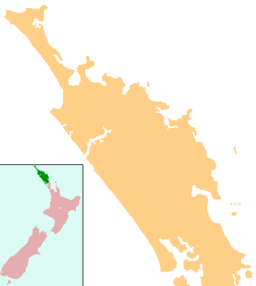Lake Waiporohita facts for kids
Quick facts for kids Lake Waiporohita |
|
|---|---|
| Location | Northland Region, North Island |
| Coordinates | 34°54′S 173°21′E / 34.900°S 173.350°E |
| Catchment area | 52.7 hectares (130 acres) |
| Basin countries | New Zealand |
| Surface area | 6.8 hectares (17 acres) |
| Max. depth | 3.5 metres (11 ft) |
Lake Waiporohita is a special type of lake called a dune lake. It is found in the Northland Region of New Zealand. You can find it close to Tokerau Beach on the Karikari Peninsula.
Contents
About Lake Waiporohita
Lake Waiporohita is a small lake. It does not have any rivers or streams flowing into it (inflows). It also does not have any rivers or streams flowing out of it (outflows). This means its water comes mainly from rain.
The area around the lake that collects water is called its catchment. This area is mostly fenced pasture land. There are also some native plants like Manuka scrub and Pohutukawa trees.
What is a Dune Lake?
Dune lakes are lakes that form in sandy areas, often near the coast. They are created when sand dunes block water flow or when hollows in the sand fill with water. These lakes are usually quite shallow. Lake Waiporohita is a good example, with a maximum depth of about 3.5 meters.
The Lake's Environment
The land around Lake Waiporohita is important for its health. The lake's catchment area covers about 52.7 hectares. This is like having 52 large sports fields. The plants and land in this area help filter the water that eventually reaches the lake.
The native plants like Manuka and Pohutukawa are important for the local environment. They provide homes for animals and help keep the soil healthy.
Keeping the Lake Healthy
The Northland Regional Council keeps a close eye on Lake Waiporohita. They monitor the lake's health and water quality. This helps them make sure the lake stays clean and safe for the plants and animals that live there.
You can find information about the lake's environment online. The LAWA website shares data about many New Zealand lakes, including Lake Waiporohita. This helps people learn about and protect these important natural places.


